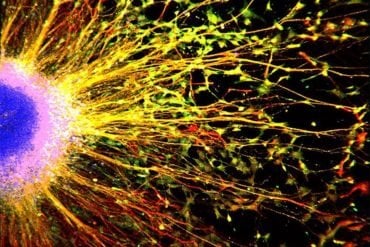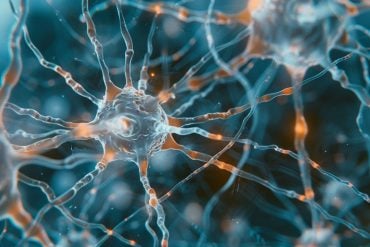Summary: A new study reveals a specific pathway in the brains of fruit flies that prevents them from falling asleep during the day.
Source: SfN.
A study of fruit flies has identified a pathway in the brain that keeps the animals from falling asleep during the day. The research, published in eNeuro, may have implications for understanding the sleep/wake cycle in mammals, which shares similar features.
Previous studies have mapped the brain circuits that induce sleep at the beginning of the night and suppress sleep at the end of the night. However, it remains unclear how the brain maintains wakefulness during the day.
Sheetal Potdar and Sheeba Vasu find that a subset of dopaminergic neurons are inhibited during the day by the light-responsive neuropeptide Pigment Dispersing Factor (PDF) and its receptor (PDFR). Reducing expression of the PDFR-encoding gene in this subset increased daytime sleep while increasing its expression decreased daytime sleep.

The researchers propose that high daytime levels of PDF promote wakefulness by blocking the activity of sleep promoting dopaminergic neurons.
Funding: Science and Engineering Research Board funded this study.
Source: David Barnstone – SfN
Publisher: Organized by NeuroscienceNews.com.
Image Source: NeuroscienceNews.com image is credited to Potdar & Vasu.
Original Research: The study will appear in eNeuro.
[cbtabs][cbtab title=”MLA”]SfN”What Keeps the Brain Awake?.” NeuroscienceNews. NeuroscienceNews, 30 July 2018.
<https://neurosciencenews.com/circadian-wakefulness-9632/>.[/cbtab][cbtab title=”APA”]SfN(2018, July 30). What Keeps the Brain Awake?. NeuroscienceNews. Retrieved July 30, 2018 from https://neurosciencenews.com/circadian-wakefulness-9632/[/cbtab][cbtab title=”Chicago”]SfN”What Keeps the Brain Awake?.” https://neurosciencenews.com/circadian-wakefulness-9632/ (accessed July 30, 2018).[/cbtab][/cbtabs]






